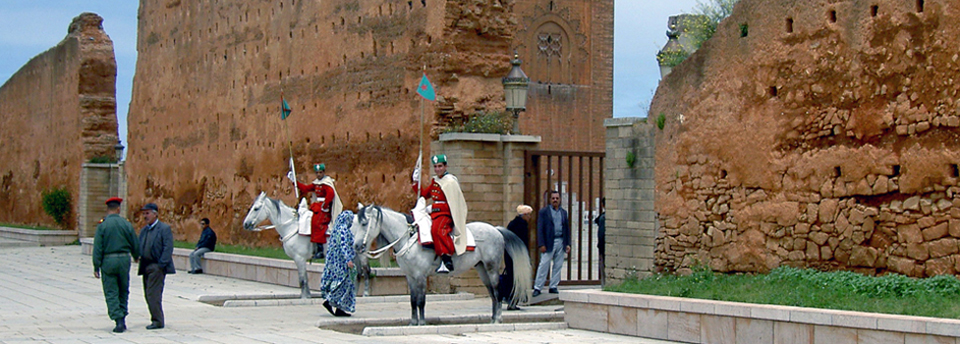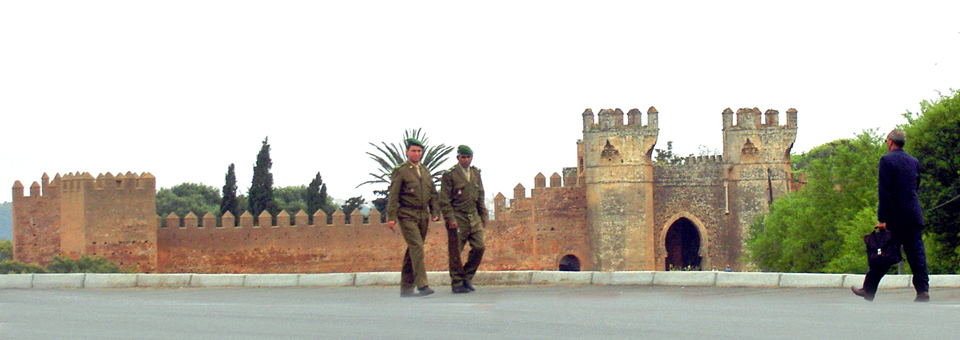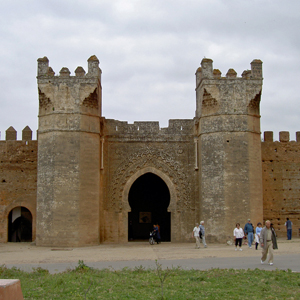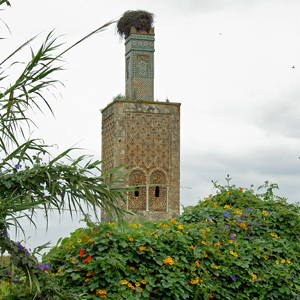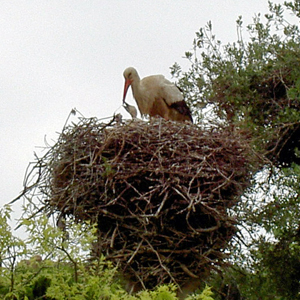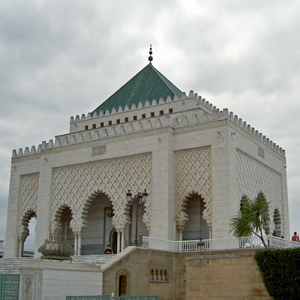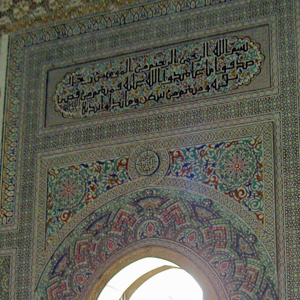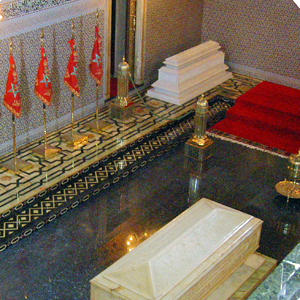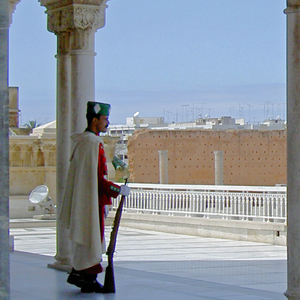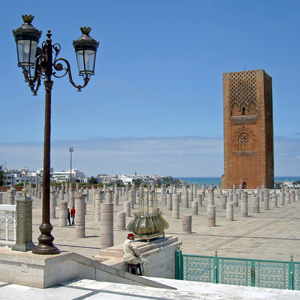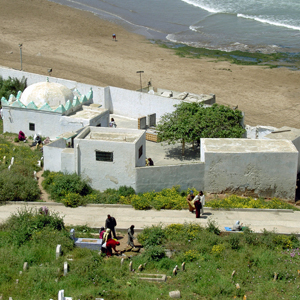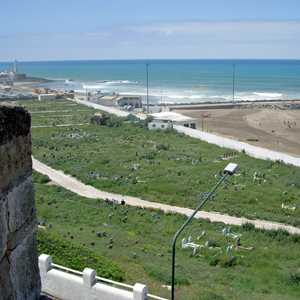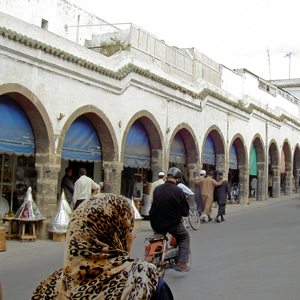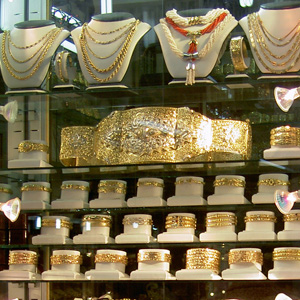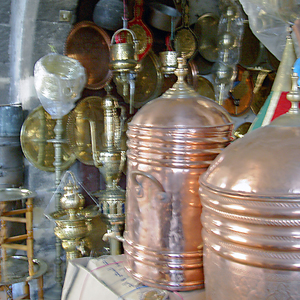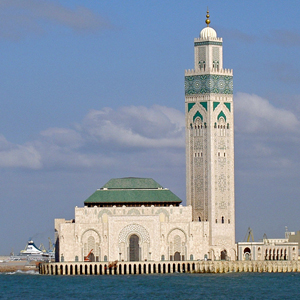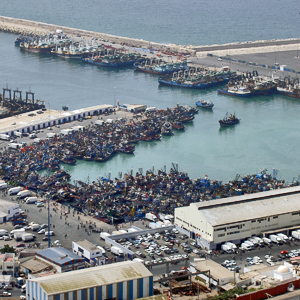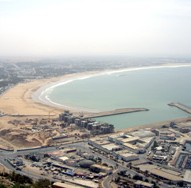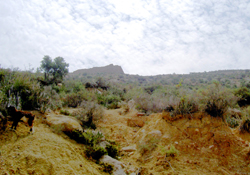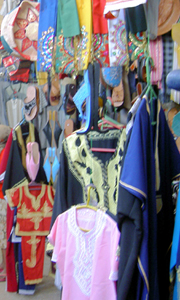Morocco: Rabat, Casablanca, and Agadir
On this day of our cruise aboard the Royal Princess, we docked in Casablanca, Morocco’s largest city, the busiest seaport in North Africa. We would soon discover that this leading commercial and industrial center of Morocco is strikingly different from the city in the movie of the same name. But first we headed for the capital city, Rabat. Our taxi driver’s English was limited, but combined with what I remembered of my high school French, we communicated well enough. His enthusiasm for his country and warm welcome made for an exceptional experience. A CD of rai music set the mood as we became absorbed in the contrasts of old and new surrounding us.
Rabat
Morocco’s capital city, Rabat, is a modern mix of European and Islamic influences and the last of the four imperial cities. The political and administrative capital since the French occupation, it is also the royal family residence.
Our taxi driver’s English was limited, but combined with what I remembered of my high school French, we communicated well enough. A CD of rai music set the mood as we became absorbed in the contrasts of old and new surrounding us.
Our first stop was at Chellah, considered most beautiful of the Moroccan ruins. Established in 200 BC, it was for a millennium the prosperous Roman town of Sala Colonia. From the 14th century, it was a necropolis (burial area) for such notables as the great Sultan El Hassan and the “Black Sultan” and his favorite wife, until destroyed by an earthquake in 1755. The archaeological museum is the best in Morocco.
Beyond the massive Merenid gate is a valley of flower gardens and fruit trees overlooking the river.
Storks swoop down on the menagerie of nests perched high on the ruins, bringing tidbits to tiny mouths.
Then we were off to the impressive and traditionally Moroccan white marble Mausoleum of King Mohammed V, inspired by Napoleon’s tomb.
An intricately tiled modern Islamic interior surrounds the white onyx tomb of the king.
The Royal Guard protects this magnificent site by day and night, honoring the king who led the country to independence.
Opposite is the 12th century Hassan Tower, a massive 144 foot high minaret with walls 8 feet thick and interior ramps that can accommodate a horse and rider. Two hundred columns stand where the original mosque was to have been constructed.
Want a henna tattoo, inexpensive jewelry—or a fez? Bargains are just outside the gate.
After passing the royal palace, mosque and gardens we walked through the grand gate of the Kasbah des Oudaïas, former fortress of the Almohads, Merenids and Andalucians. A labyrinth of colorful lanes led us to a terrace overlooking the ocean.
Nearby is the Musée des Oudaïas (Museum of Moroccan Arts), in a 17th century palace, and the lovely Andalusian Gardens.
The scenic shoreline route back to Casablanca brought us past crashing waves and fisherman, some selling their catch.
Casablanca
Casablanca’s Corniche area offered beautiful beaches, promenades, popular restaurants and nightclubs. Our focus was traditional Morocco, and our first stop was Old Medina, the original town, now a market district with rampart walls, narrow streets, whitewashed houses, and fascinating food and spice stalls. Many souks line the traditional Arabian style streets and courtyards of the Habous Quarter, or “new medina”. Bargaining for copper, silver, ceramics, cloth, and rugs is an artful game, part of the experience.
Hungry? Stop at Chez Benis, renowned for its pastry. The local Central Market completed our shopping experience.
The day’s finale was Casablanca’s magnificent Hassan II Mosque, a masterpiece of intricate mosaics and marble completed in 1993 at a cost of $500 million. It is the only mosque inMorocco non-Muslims may enter. The largest religious building in Africa, it is second-largest in the world, after the mosque in Mecca. It features a retractable roof and accommodates 25,000 inside and 85,000 outside. The world’s tallest minaret stretches 650 feet high, appearing to touch the bright sun.
It was time to return to our Princess cruise ship, but not before our driver had presented us with a bouquet of roses. As we sailed away, darkness surrounded us, except for the brightly lit mosque, the laser beam shining brightly atop the minaret, a beacon toward Mecca, beckoning us to return to this exotic continent.
Agadir
Our second Moroccan port was Agadir.
Once home of Morocco’s Barbary pirates, this fishing port is Morocco’s top tourist resort, averaging over 300 sunny days yearly. Rebuilt after the devastating 1960 earthquake, it is now known for its modern harbor, golden beaches and luxury hotels.
We taxied to the Kasbah (fortress) overlooking the city, for a spectacular panoramic view of the coast.
Goats herders were on the steep slopes below. It was as if we had traveled back in time.
Then we traveled along tree-lined boulevards to the narrow streets of the old Berber village. The souk (market) was a sensory delight — spices, vegetables, clothing, pottery, leather goods, jewelry, metalware, and more — and a display of meats, animal heads and hooves that elicited gasps from unsuspecting tourists!
We sat with a merchant clad in a traditional jellaba, the hooded garment with wide sleeves, sampling sweet mint tea as he described spices in a relaxed and welcoming atmosphere….It was a day to remember.
Believe what you see and lay aside what you hear.
Moroccan Proverb

